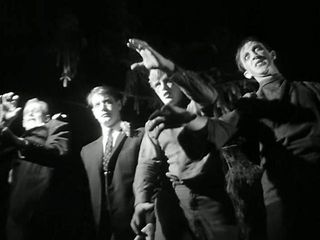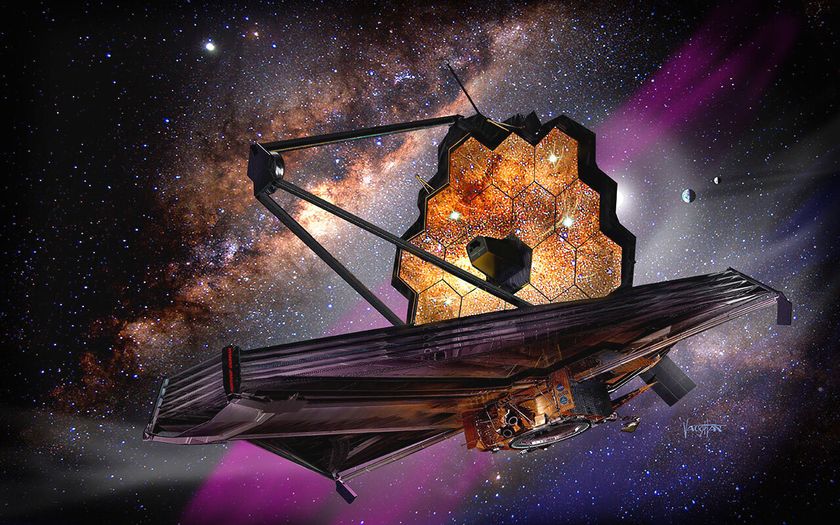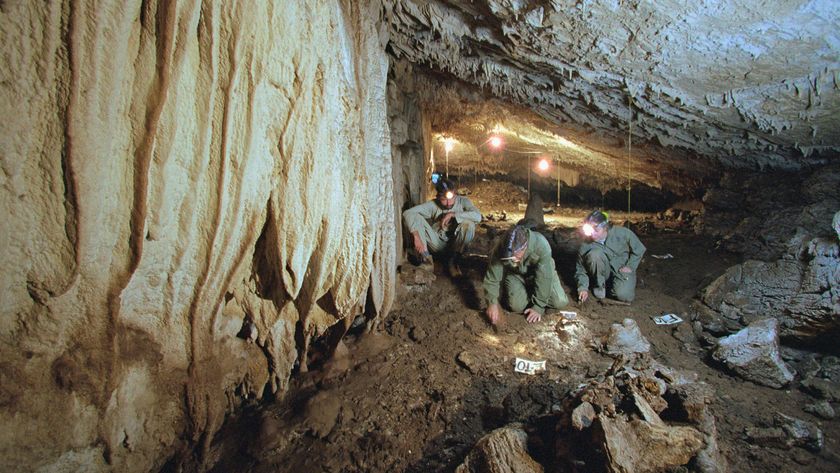Zombies: The Real Story of the Undead
From "World War Z" to "The Walking Dead" to "Shaun of the Dead" to "Pride and Prejudice and Zombies" and countless brain-dead rip-offs, zombies — re-animated corpses with an unstoppable craving for human flesh, especially brains — have invaded pop culture like never before. For staggering, slow-moving monsters, zombies have become quite a force in the entertainment industry over the past decade.

Though George Romero's 1968 film "Night of the Living Dead" is often considered to be the original modern zombie film, the first actually appeared nearly 40 years earlier in "White Zombie," starring Béla Lugosi as an evil voodoo priest in Haiti who zombifies a beautiful young woman. In the years since, only a handful of zombie films have returned to their Haitian origins — most notably "The Serpent and the Rainbow."
According to the Oxford English Dictionary, the word "zombie" first appeared in English around 1810 when historian Robert Southey mentioned it in his book "History of Brazil." But this "Zombi" was not the familiar brain-eating manlike monstrosity but instead a West African deity. The word later came to suggest the vital, human force leaving the shell of a body, and ultimately a creature human in form but lacking the self-awareness, intelligence, and a soul. It was imported to Haiti and elsewhere from Africa through the slave trade.
Voodoo or science?
Everyone knows the fictional zombies, but fewer know the facts about zombies. To many people, both in Haiti and elsewhere, zombies are very real. They are not a joke; they are something to be taken seriously. Belief in magic and witchcraft is widespread throughout Haiti and the Caribbean, often in the form of religions such as voodoo and santeria.
Haitian zombies were said to be people brought back from the dead (and sometimes controlled) through magical means by voodoo priests called bokors or houngan. Sometimes the zombification was done as punishment (striking fear in those who believed that they could be abused even after death), but often the zombies were said to have been used as slave labor on farms and sugarcane plantations. In 1980, one mentally ill man even claimed to have been held captive as a zombie worker for two decades, though he could not lead investigators to where he had worked, and his story was never verified.
For decades Westerners considered zombies little more than fictional movie monsters, but that assumption was questioned in the 1980s when a scientist named Wade Davis claimed to have found a powder that could create zombies, thus providing a scientific basis for zombie stories. Davis didn't believe in voodoo magic. But he did believe that he had found something that could poison victims into a zombie-like state: a powerful neurotoxin called tetrodotoxin, which can be found in several animals including pufferfish. He claimed to have infiltrated secret societies of bokors and obtained several samples of the zombie-making powder, which were later chemically analyzed.
Davis wrote a book on the topic, "The Serpent and the Rainbow," which was later made into a horror film. For a while Davis was widely touted as the man who had scientifically solved the mystery of zombies. However Davis's claims were later challenged by skeptical scientists who regarded his methods as unscientific, pointing out that the samples of the zombie powder he provided were inconsistent, and that the amounts of neurotoxin contained in those samples were not high enough to create zombies. Furthermore, the dosages used by the bokors would need to be exact, since too much of the toxin could easily kill a person. Others pointed out nobody had ever found any of the many supposed plantations filled with zombie laborers on the small island country.
In a second book, "Passage of Darkness: The Ethnobiology of the Haitian Zombie," Davis acknowledged problems with his theories and refuted some of the more sensational claims attributed to him. Still, he insisted, the Haitian belief in zombies could be based on the (admittedly rare) cases where a person was poisoned by tetrodotoxin and later revived inside the coffin and taken from the grave. Furthermore, he added, there was much more to the zombie phenomenon than simply the powder; it was only one part of a deep-rooted sociocultural belief in the power of witchcraft. In Haitian culture, voodoo priests do much more than create zombies; they are said to bring both blessings and curses through magic.
Thus the stories of the real-life Haitian zombies arose like a corpse from the grave, and eventually fell like a zombie shot in the head. Though zombies remain a myth in real life, there are more than enough of the fictional ones to satisfy the gorehounds and zombie fans for ages to come.
Benjamin Radford is deputy editor of "Skeptical Inquirer" science magazine and author of six books, including "Scientific Paranormal Investigation: How to Solve Unexplained Mysteries." His website is www.BenjaminRadford.com.
Related:
- Zombie Facts: Real and Imagined (Infographic)
- Zombie Apocalypse Post Sends Hordes to CDC Blog
- The Zombie Apocalypse Isn't Coming, CDC Says
- Zombie Animals: 5 Real-Life Cases of Body-Snatching
- What's the Most Successful Zombie Movie Ever?
Further reading:
Sign up for the Live Science daily newsletter now
Get the world’s most fascinating discoveries delivered straight to your inbox.













